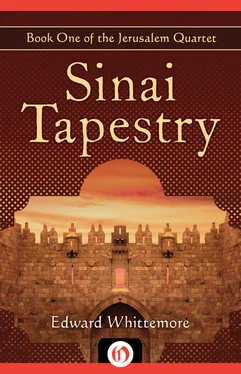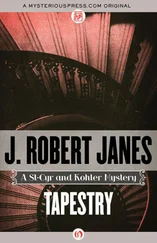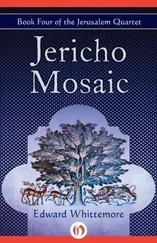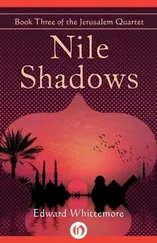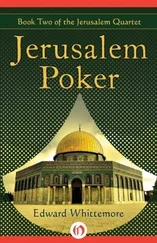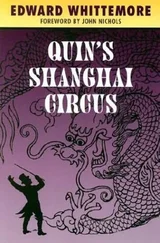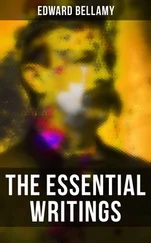There was a hushed memorial service in the United Church in Dorset that August. Afterwards, a reception was held on the large lawn in front of the family house. It was there that the disparate parts of Ted’s world came together, perhaps for the first time; there was his family, his two sisters and two brothers and their spouses, nieces, and nephews with their own families (but not Ted’s former wives or the two daughters who had flown to New York to say “goodbye”); there were neighbors, Yale friends, and a couple of colleagues from the Lindsay years. Were there any “spooks” in attendance? One really can’t say, but there were eight “spooks” of a different sort from Yale, members of the 1955 Scroll and Key delegation. Ann and Carol were, of course, there.
Jerusalem and Dorset. The beautiful Holy City on the rocky cliffs overlooking the parched gray-brown desert. A city marked by thousands of years of history, turbulent struggles between great empires and three of the most enduring, vital religions given by God to mankind. And the summer-green valley in Vermont (covered by snow in the winter and by mud in the spring) where Dorset nestles between the ridges of the softly rolling Green Mountains. Once one of the cradles of the American Revolution and American democracy, and later a thriving farming and small manufacturing community, it is a place where time has stood still since the beginning of the twentieth century. One was the subject of Whittemore’s dreams and books; the other the peaceful retreat in which he dreamt and wrote the last summers of his life.
Ted had finally come home to New England. It had been a long journey: Portland, New Haven, Japan, Italy, New York, Crete, Jerusalem, New York, and now Dorset. Along the way he had many friends and companions; he was not a particularly good husband or father and disappointed many. But gradually he had found his voice, written his novels, and fallen in love with Jerusalem. I would like to think that Ted died dreaming of his Holy City. In a sense he was at one with that stonecutter turned medieval knight, turned antiquities dealer, Haj Harun. For Whittemore was the eternal knight-errant who “made it” at Yale in the 1950s, “lost it” in the CIA, and then made himself into a wonderful novelist with the voice of a mystic. The voice of a mystic who had absorbed the best of Judaism, Christianity, and Islam. His great-grandfather the minister and his great-grandmother the writer would have been equally proud of him. His spirit rests peacefully in Dorset, Vermont.
Tom Wallace
New York City, 2002
SINAI TAPESTRY , ORIGINALLY PUBLISHED in 1977, is the first book of Edward Whittemore’s Jerusalem Quartet: four novels that make the long, complex history of the Middle East comprehensible as no other books do, and that do so by creating an alternate version of history — part real and part imagined (and what pleasure, while reading, to speculate on what, in the novels, is real and what imagined!) — that begins, in this first book, by telling the story of how early in the nineteenth century, Skanderberg Wallenstein, a fanatical Trappist monk from Albania, comes upon what is “without question the oldest Bible in the world” and discovers that “it denied every religious truth ever held by anyone.”
What would happen, then, he wonders — in ways not so different from the actual speculations of twentieth century Biblical scholars—“if the world suddenly suspected that Mohammed might well have lived six centuries before Christ” or “that Christ had been a minor prophet in the age of Elijah” or “that the virtues of Mary and Fatima and Ruth had been confused in the minds of later chroniclers and freely interchanged among them?”
“Melchizedek must have his City of Peace,” Wallenstein concludes, just as “men must have their Jerusalem.” Believing that faith must be sustained in the world, Wallenstein also believes that if the cause for faith is absent, then it is his duty to provide it. “The decision he had made in his cell,” Whittemore tells us, “was to forge the original Bible.”
But this forgery — what has led to it, and what issues from it — becomes, in Sinai Tapestry, an imaginative conceit that informs the entire Quartet: it is Whittemore’s way of asking us to consider the many ways in which illusions can give birth to realities, by which realities can be transformed by dreams, and — above all — through which the real and the imagined can conspire to create those events and legends that determine how we live, love, and die.
The four books that make up the Jerusalem Quartet comprise, in their entirety, nothing less than a remarkable love song to the Holy Land, and to the myriad dreams and acts that have, across more than four millennia, been at the heart of all we have come to believe are cause and effect of our individual and collective destinies.
But to speculate about the relation in the Quartet between history and belief, and between the real and the fanciful — to try to understand or explain the complicated ways these novels themselves, through story, speculate about the nature, through time, of faith and belief, of the actual and the fabricated, and of time itself — is to forget, momentarily, that these are, first, last, and always, novels that live because of Whittemore’s unique gifts as a storyteller.
“Place,” Whittemore states, in Jericho Mosaic, the final volume of the Quartet, “is the beginning of memory,” and in these books Whittemore shows us, repeatedly, how the history of a particular place — its past and the dreams dreamt in it across millennia — are as much the cause of things as are any mere political events. The portraits of places such as Jericho, Damascus, Beirut, Jerusalem, and the Sinai — the texture and detail of buildings and marketplaces, of underground chambers and above-ground fortifications, of holy places and deserts — are vividly, tangibly rendered. As with the “endless razings and rebuildings of Jerusalem,” these places take on life and breathe life — in the way Whittemore’s characters do, and, in a fictional world where the possible invariably takes precedence over the probable, they become central actors in the narrative.
“Jericho,” reflects Abu Musa, a wealthy Arab patriarch and grower of fruit trees who earlier in his life had ridden with the forces of Lawrence of Arabia, “is a crossing of history…We sit but fifteen miles from Jerusalem and a little more from Amman, and Jerusalem is midway between Amman, the Ancient Greek city of Philadelphia, and the sea. Jerusalem is holy, and biblical Rabbat Ammon or Amman is where King David put Uriah the Hittite in the forefront of battle to be killed, so he might enjoy the dead man’s wife Bathsheba, who gave the king a son called Solomon. Thus the mountains and the valley, the deserts and the sea, lust and wisdom and murder and empire, these various profane and sacred causes of man all find their crossroads in Jericho, which is why we grow oranges here. To refresh those who are forever passing through.”
Jericho Mosaic , from which this passage comes, is the most coherent, and the most coherently realized of the four novels. It is an intricate tale of espionage that centers on the story of Yossi, a young Israeli, allegedly killed during the 1956 war in the Sinai, who becomes an agent whose mission it is “to penetrate Arab culture so deeply that he would never come back.” The story (modeled in large part on the true story of the Israeli agent Ellie Cohen) of how he forges a new identity for himself, survives various Syrian regimes, passes information along and learns to become the respected businessman Halim — especially the way in which his intelligence-gathering is decisive in the Six Day War of 1967—is complex and compelling — worthy of comparison to the novels of John Le Carré, or — a more apt comparison — to those of Graham Greene.
Читать дальше
